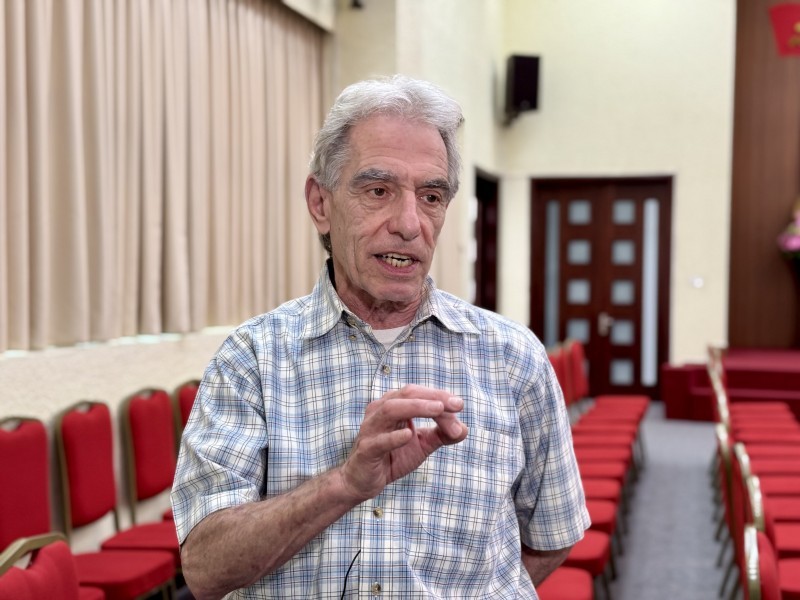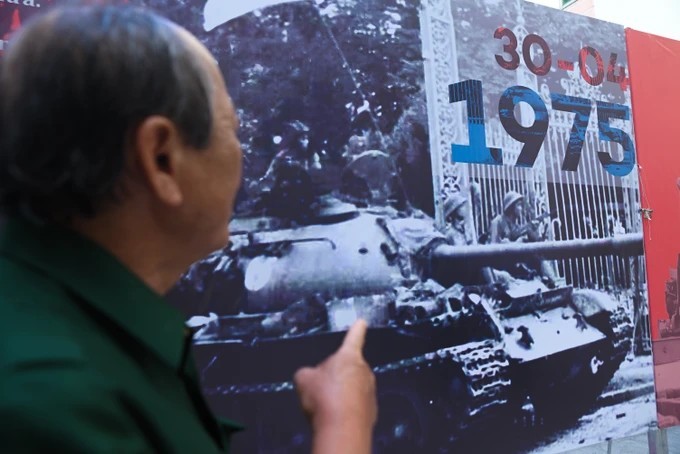Discover The Secret Apartment Hidden Inside the Eiffel Tower
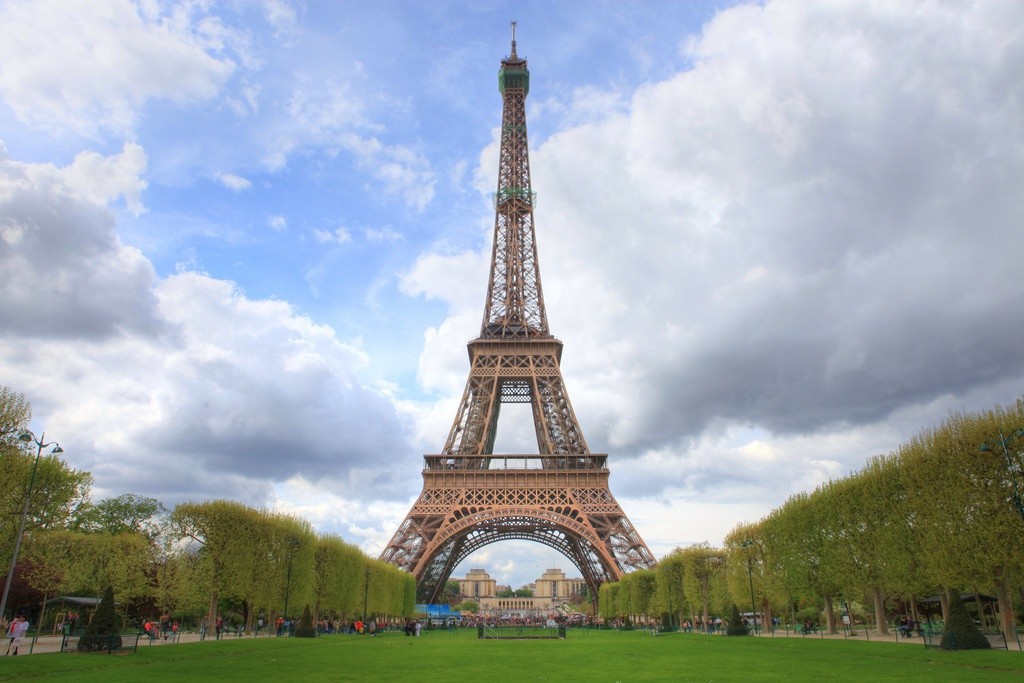 |
| Photo: Archdaily |
When the Effeil Tower opened in 1889 to much wonder and acclaim, designer Gustave Eiffel soaked up the praise, but as if that wasn’t enough, it was soon revealed that he had built himself a small apartment near the top of the world wonder garnering him the envy of the Paris elite in addition to his new fame.
When Gustave Eiffel’s company built Paris’ most recognizable monument for the 1889 World’s Fair, many regarded the massive iron structure with skepticism. Today, the Eiffel Tower, which continues to serve an important role in television and radio broadcasts, is considered an architectural wonder and attracts more visitors than any other paid tourist attraction in the world.
Designing and Building the Eiffel Tower
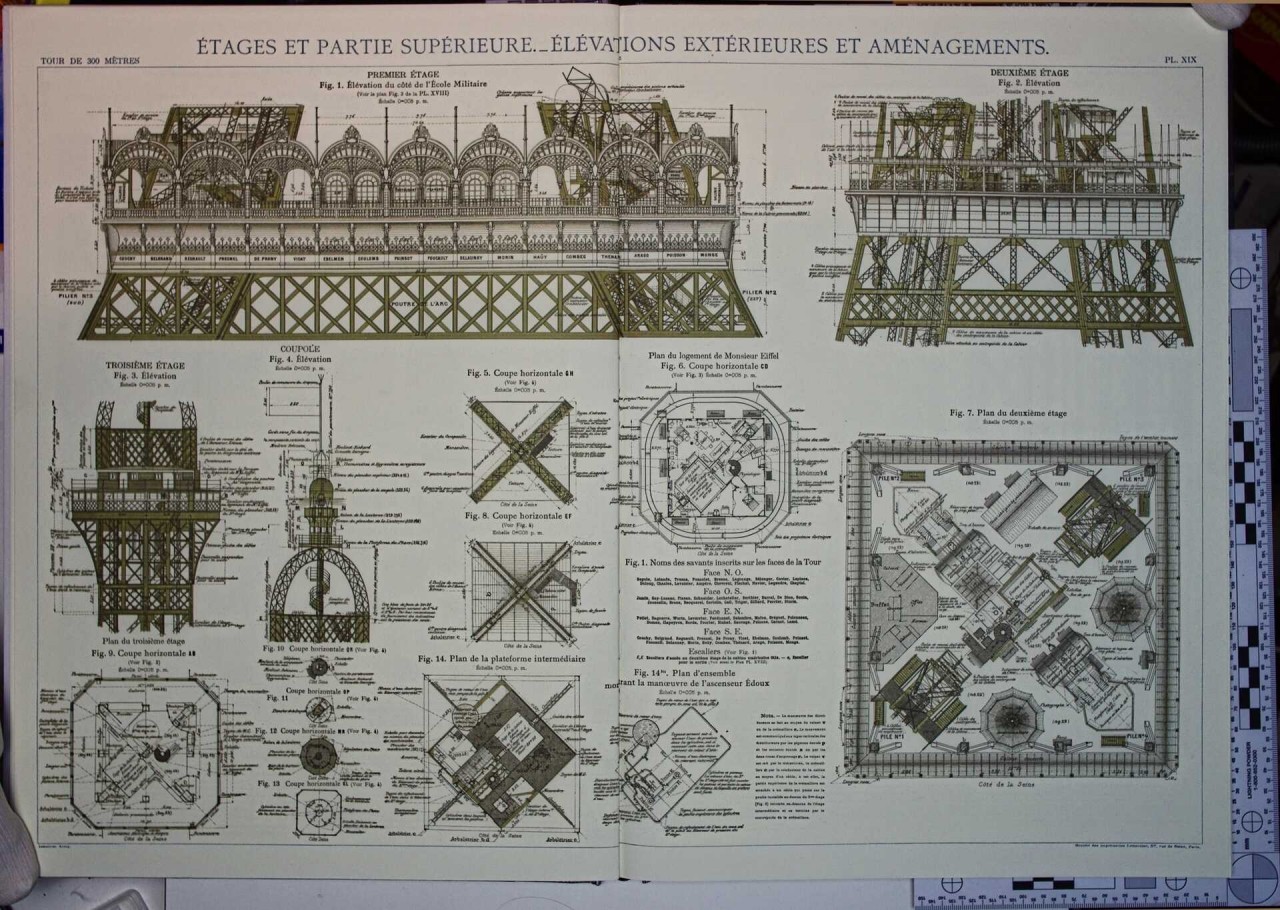 |
| Photo: Lofficitel |
In 1889, Paris hosted an Exposition Universelle (World’s Fair) to mark the 100-year anniversary of the French Revolution. More than 100 artists submitted competing plans for a monument to be built on the Champ-de-Mars, located in central Paris, and serve as the exposition’s entrance. The commission was granted to Eiffel et Compagnie, a consulting and construction firm owned by the acclaimed bridge builder, architect and metals expert Alexandre-Gustave Eiffel. While Eiffel himself often receives full credit for the monument that bears his name, it was one of his employees—a structural engineer named Maurice Koechlin—who came up with and fine-tuned the concept. Several years earlier, the pair had collaborated on the Statue of Liberty’s metal armature.
Eiffel reportedly rejected Koechlin’s original plan for the tower, instructing him to add more ornate flourishes. The final design called for more than 18,000 pieces of puddle iron, a type of wrought iron used in construction, and 2.5 million rivets. Several hundred workers spent two years assembling the framework of the iconic lattice tower, which at its inauguration in March 1889 stood nearly 1,000 feet high and was the tallest structure in the world—a distinction it held until the completion of New York City’s Chrysler Building in 1930. (In 1957, an antenna was added that increased the structure’s height by 65 feet, making it taller than the Chrysler Building but not the Empire State Building, which had surpassed its neighbor in 1931.) Initially, only the Eiffel Tower’s second-floor platform was open to the public; later, all three levels, two of which now feature restaurants, would be reachable by stairway or one of eight elevators.
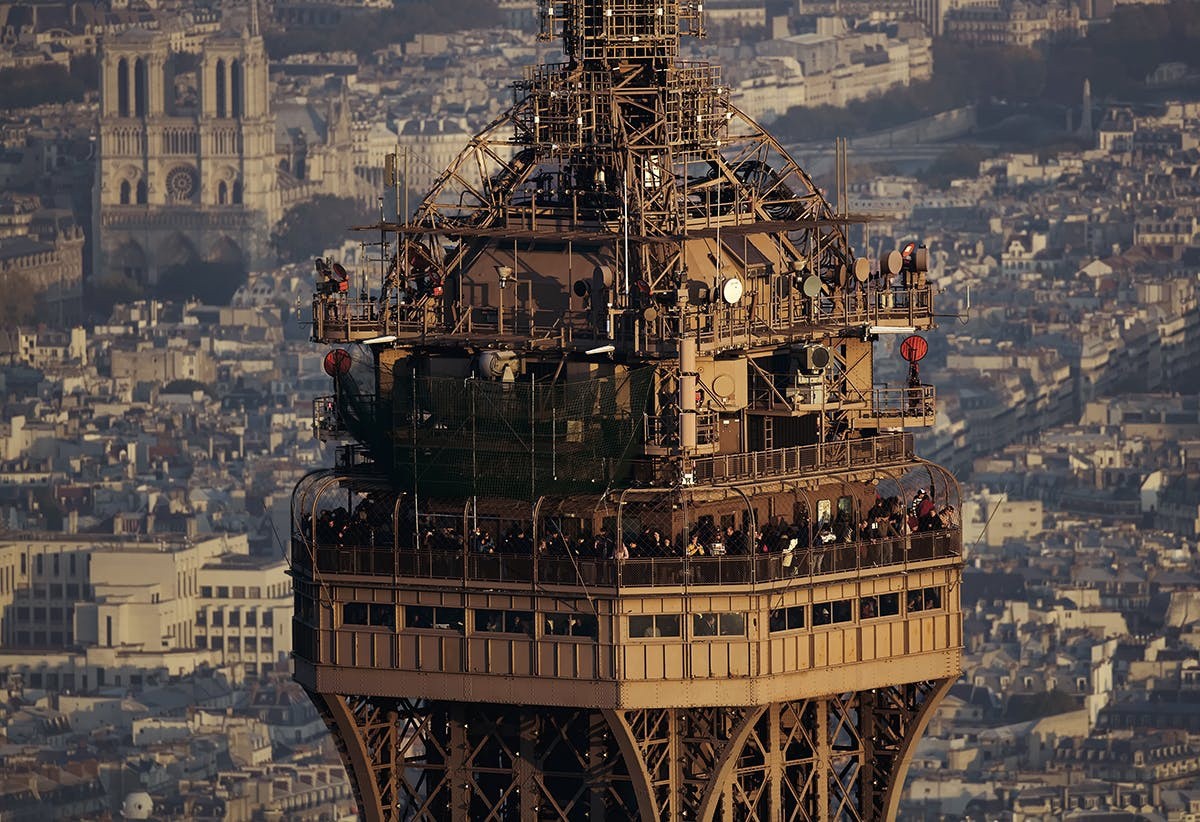 |
| Photo: Toureiffel |
Millions of visitors during and after the World’s Fair marveled at Paris’ newly erected architectural wonder. Not all of the city’s inhabitants were as enthusiastic, however: Many Parisians either feared it was structurally unsound or considered it an eyesore. The novelist Guy de Maupassant, for example, allegedly hated the tower so much that he often ate lunch in the restaurant at its base, the only vantage point from which he could completely avoid glimpsing its looming silhouette.
The Eiffel Tower Becomes a Permanent Feature of the Paris Skyline
Originally intended as a temporary exhibit, the Eiffel Tower was almost torn down and scrapped in 1909. City officials opted to save it after recognizing its value as a radiotelegraph station. Several years later, during World War I, the Eiffel Tower intercepted enemy radio communications, relayed zeppelin alerts and was used to dispatch emergency troop reinforcements. It escaped destruction a second time during World War II: Hitler initially ordered the demolition of the city’s most cherished symbol, but the command was never carried out. Also during the German occupation of Paris, French resistance fighters famously cut the Eiffel Tower’s elevator cables so that the Nazis had to climb the stairs.
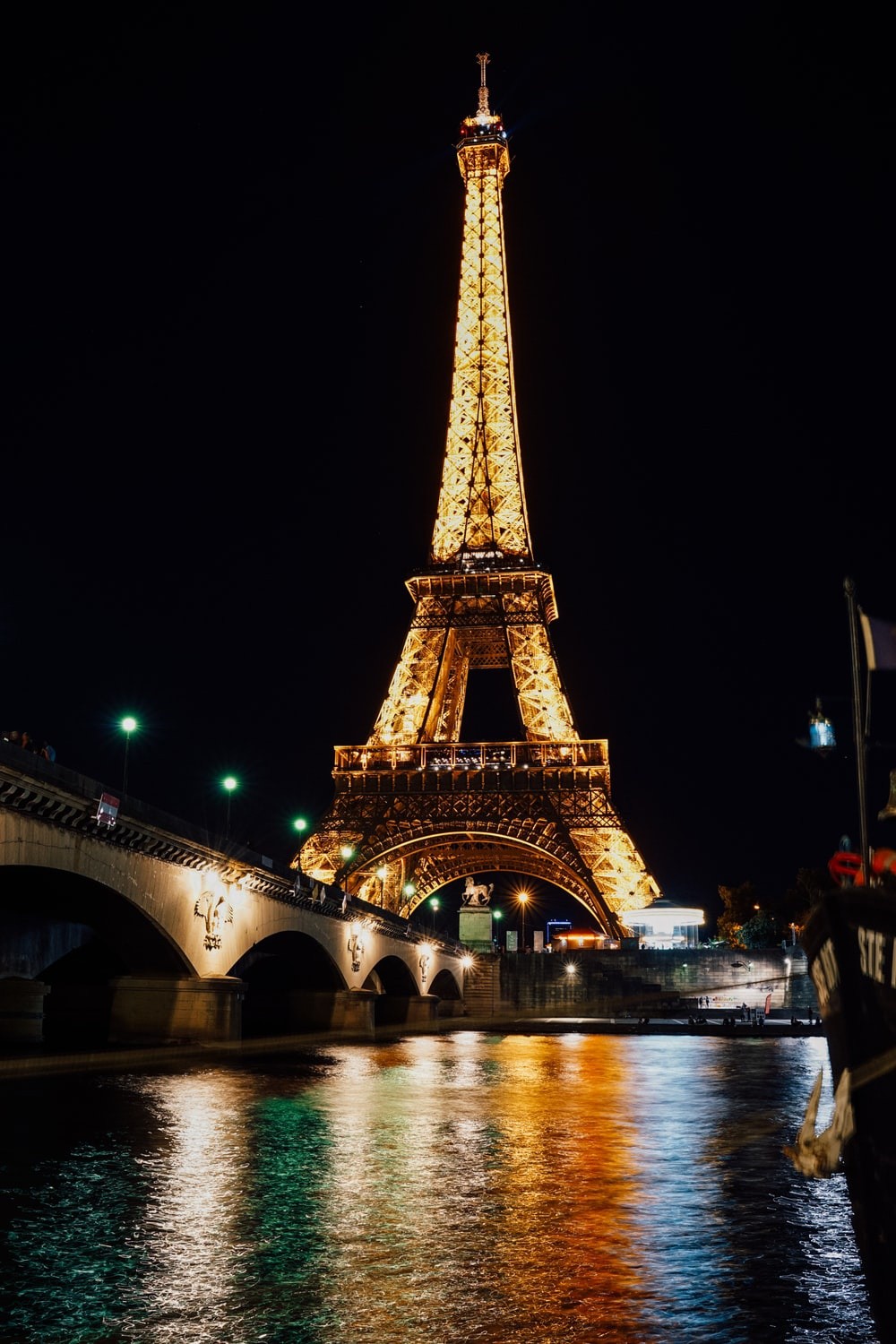 |
| Photo: Myartyard |
Over the years, the Eiffel Tower has been the site of numerous high-profile stunts, ceremonial events and even scientific experiments. In 1911, for instance, the German physicist Theodor Wulf used an electrometer to detect higher levels of radiation at its top than at its base, observing the effects of what are now called cosmic rays. The Eiffel Tower has also inspired more than 30 replicas and similar structures in various cities around the world.
Now one of the most recognizable structures on the planet, the Eiffel Tower underwent a major facelift in 1986 and is repainted every seven years. It welcomes more visitors than any other paid monument in the world—an estimated 7 million people per year. Some 500 employees are responsible for its daily operations, working in its restaurants, manning its elevators, ensuring its security and directing the eager crowds flocking the tower’s platforms to enjoy panoramic views of the City of Lights.
There's a Secret Apartment Hidden Inside the Eiffel Tower
This Parisian apartment may not have all of the chic amenities you'd expect from a French pied-a-tierre, but it definitely has the best view: The City of Lights, as seen from top of the Eiffel Tower.
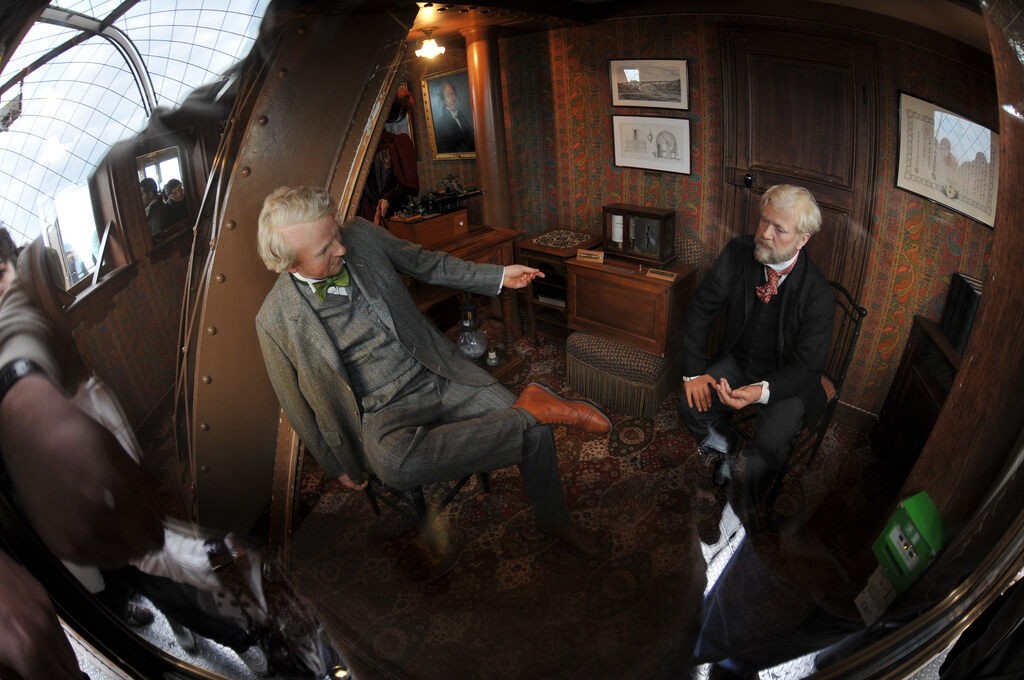 |
| Gustave Eiffel's Secret Apartment SERGE MELKI / CC BY 2.0 |
If you’re traveling to Paris, seeing the sights from the top of the Eiffel Tower is a can’t-miss opportunity. Now, four lucky people will have the chance to enjoy the iconic building in a unique way—from their own luxurious apartment on the first floor. Vacation-rental company HomeAway is giving four winners the chance to stay in Haussmannian-style living quarters for the duration of the UEFA Euro 2016 soccer tournament, June 10 to July 10. The guests will enjoy panoramic views of the Arc de Triomphe, the Sacre Coeur, and the Seine river and surely treasure an unprecedented vacation memory.
But this isn’t the first and only apartment in the tower. When Gustave Eiffel designed his namesake tower, he included a private apartment for himself at the top, which is now available for the public to tour.
Eiffel was “the object of general envy” among Parisians during his lifetime, and it wasn’t for designing one of the most famous monuments of all time. Rather, it was due to the fact that he had a private apartment at the top of the tower—and almost no one else was allowed access to it.
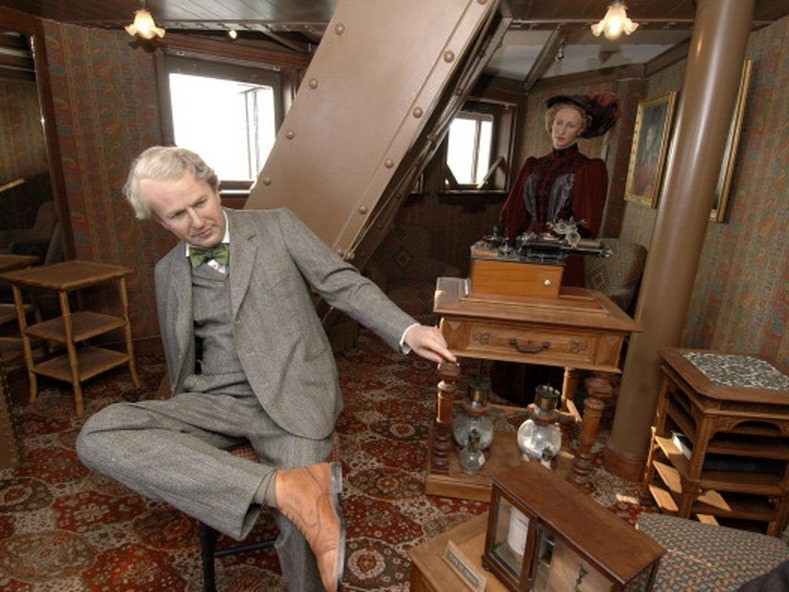 |
| Another angle of Gustave Eiffel in his private apartment.© Astrid DI CROLLALANZA / Getty Images |
In his book *La Tour Eiffel de Trois Cent Métres (The Eiffel Tower of 300 Meters),*author Henri Girard explains that Parisians would offer up “a small fortune” to rent his private space for a single night, but Eiffel consistently refused. However, he would occasionally entertain guests of the utmost prestige (Thomas Edison is one notable example).
Unlike the scientific marvel of steel and hard lines it’s housed in, the pied à terre is cozy and romantic—think paisley wallpaper, wood furniture, and oil paintings. All in all, not a shabby place to view Paris from the best vantage point in town.
While Eiffel Tower visitors were previously denied access to the apartment (what Monsieur Eiffel would have wanted, no doubt), the 1,000-foot-high space is officially open to the public. At long last, we mere peasants can get a look at what it’s like to live at the world’s most enviable address.
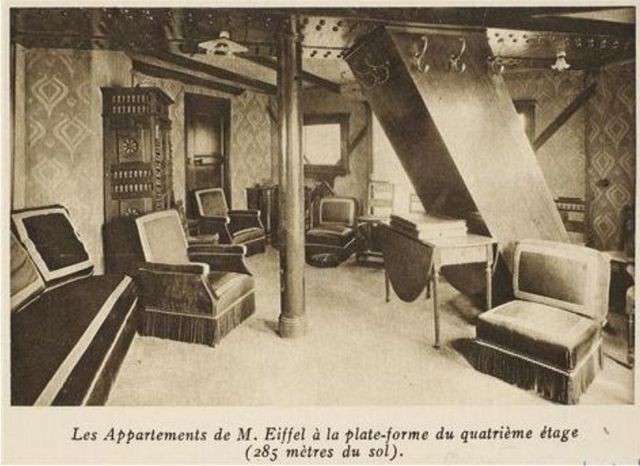 |
| Photo: Pinterest |
Know Before You Go
Today, after being off limits for years, the apartment can be viewed through a window by visitors who buy a ticket to the top. Much of the furnishings remain the same and there are a couple of rather wan-looking mannequins of Eiffel and Edison.
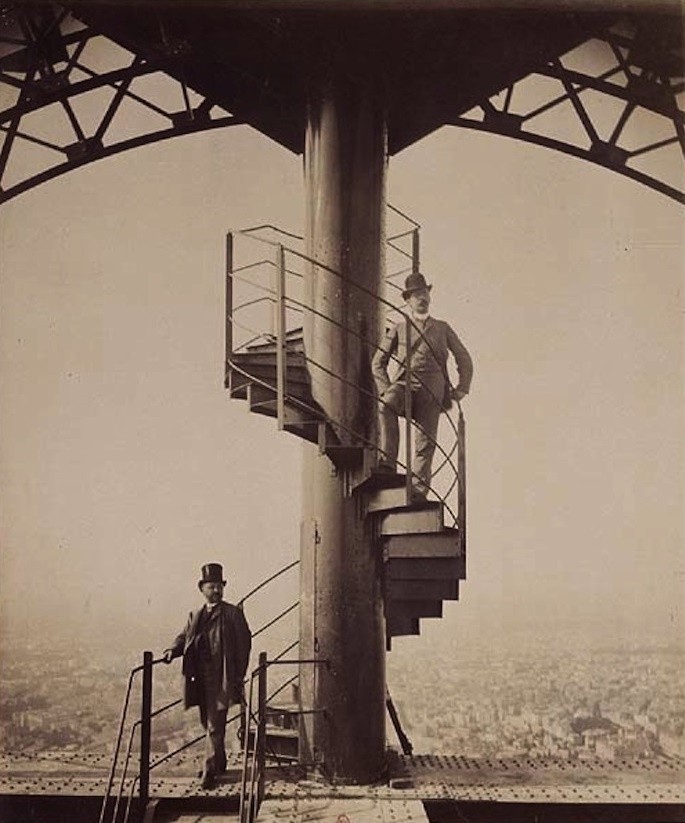 |
| Photo: Valemagazine |
About Gustave EiffelGustave Eiffel was a French engineer who designed and oversaw construction of the Eiffel Tower. Gustave Eiffel began to specialize in constructing with metal after college, and his early work focused chiefly on bridges. In 1879, the chief engineer on the Statue of Liberty died and Eiffel was hired to replace him, going on to design the metallic skeleton of the structure. In 1882, Eiffel began work on the Garabit viaduct, which was, at the time, the highest bridge in the world. Soon thereafter, he began work on what would become known as the Eiffel Tower, the structure that would cement his name in history. Alexandre-Gustave Eiffel was born in Dijon, France on December 15, 1832. Interested in construction at an early age, he attended the École Polytechnique and later the École Centrale des Arts et Manufactures (College of Art and Manufacturing) in Paris, from which he graduated in 1855. Setting out on his career, Eiffel specialized in metal construction, most notably bridges. He worked on several over the next few decades, letting mathematics find ways to build lighter, stronger structures. One of Eiffel's first projects came in 1858 when he oversaw the building of an iron bridge at Bordeaux, and by 1866 Eiffel had set up his own company. By the time he designed the arched Gallery of Machines for the Paris Exhibition of 1867, his reputation was solidified. In 1876, he designed the 525-foot steel-arched Ponte Maria Pia Bridge over the Douro River in Oporto, Portugal, which was completed the following year. Working from the same design nearly 20 years later, he built the renowned 540-foot Garabit viaduct in Truyère, France. Suspended 400 feet above the surface of the water, it was the highest bridge in the world for years after its construction. As his career advanced, Eiffel moved away from bridge work, such as in 1879 when he created the dome for the astronomical observatory in Nice, France, notable in that the dome was movable. That same year, when the Statue of Liberty's initial internal engineer, Eugène Viollet-le-Duc, unexpectedly died, Eiffel was hired to replace him on the project. He created a new support system for the statue that would rely on a skeletal structure instead of weight to support the copper skin. Eiffel and his team built the statue from the ground up and then dismantled it for its journey to New York Harbor. Eiffel turned his interest to meteorology in his final years, studying the subject at length before his death on December 27, 1923. |
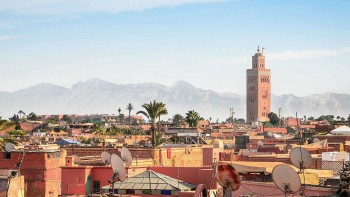 | Visit Marrakech: Brilliant And Stunning “Red City” in Morocco Marrakech, the grand city of Morroco, is where you can find the most glorious palaces, brightful markets, and many tourist attractions that are iconic symbols ... |
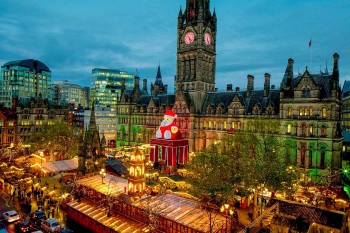 | Top 10 Best Christmas Markets in Europe Christmas is the best time in the year for relaxation and fun with your loved ones. Dont forget to visit these biggest and best Christmas ... |
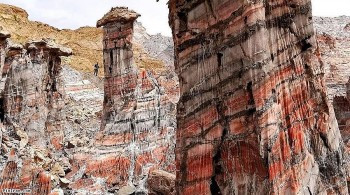 | Explore The Unique Jashak Salt Dome – The Natural Wonder of Iran The Jashak salt dome, which lies in the Zagros Mountains in southwestern Iran, is unique for its natural structures and becomes one of the most ... |
Recommended
 World
World
Pakistan NCRC report explores emerging child rights issues
 World
World
"India has right to defend herself against terror," says German Foreign Minister, endorses Op Sindoor
 World
World
‘We stand with India’: Japan, UAE back New Delhi over its global outreach against terror
 World
World
'Action Was Entirely Justifiable': Former US NSA John Bolton Backs India's Right After Pahalgam Attack
Popular article
 World
World
US, China Conclude Trade Talks with Positive Outcome
 World
World
Nifty, Sensex jumped more than 2% in opening as India-Pakistan tensions ease
 World
World
Easing of US-China Tariffs: Markets React Positively, Experts Remain Cautious
 World
World




